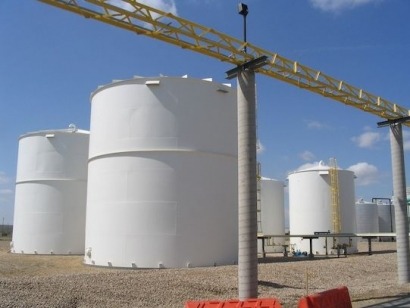
According to the agency's Short-Term Energy Outlook, wood biomass accounted for 103,000 MWh per day of electrical generation in 2012. In 2013, power from wood biomass is expected to increase to an average of 106,000 MWh per day, and 110,000 MWh per day in 2014.
Approximately 54,000 MWh of electricity per day was generated from waste biomass in 2012. That is expected to increase to 56,000 MWh per day in 2013, and be maintained at that level through 2014.
The report states the electric power sector consumed 177 trillion Btu of wood biomass power and 252 trillion Btu of waste biomass power in 2012. This is expected to increase to a relative 198 trillion Btu and 260 trillion Btu in 2013, and 220 trillion Btu and 261 trillion Btu in 2014.
The industrial sector consumed 1.3 quadrillion Btu of woody biomass in 2012, along with 172 trillion Btu of waste biomass. Consumption by the sector is expected to be reduced to a respective 1.227 quadrillion Btu and 171 trillion Btu in 2013.
In 2014, the EIA predicts the industrial sector will consume 1.24 quadrillion Btu of woody biomass and 173 trillion Btu of from waste biomass feedstock.
On the other renewables front, the Short-Term Energy Outlook says that total renewable energy consumption declined by 2.0 percent in 2012, as the decrease in hydropower more than offset the growth in the consumption of other renewable energy forms.
This drop was the result of hydropower production falling by 13 percent as water supply in the Pacific Northwest fell from the unusually high levels seen in 2011.
The agency projects renewable energy consumption to increase by 2.6 percent in 2013. While hydropower declines by 2.7 percent, nonhydropower renewables grow by an average of 5.2 percent. In 2014, the growth in total renewables is projected to continue at a rate of 4.1 percent, as a 1.3-percent increase in hydropower is combined with a 5.3-percent increase in nonhydropower renewables.
It also currently estimates that wind capacity will increase by 7 percent in 2013 and by 10 percent in 2014. However, electricity generation from wind is projected to increase by 15 percent in 2013, as capacity that came on line at the end of 2012 is available for the entire year in 2013. Wind-powered generation is projected to grow by 8 percent in 2014.
The forecast solar energy continues robust growth, although the total amount remains a small share of total U.S. generation. Projected consumption grows by 33 percent in 2012, 29 percent in 2013, and 30 percent in 2014.
Solar energy is not directly affected by the changes in the PTC, but the effect could be indirect as more wind energy is available to meet state renewable portfolio standards.
As for bio-fuels, the US Environmental Protection Agency published a notice of proposed rulemaking on January 31, 2013, for the 2013 renewable fuel volume obligations under the Renewable Fuel Standard program (RFS2) that lowers the 2013 mandate for cellulosic bio-fuels from the statutory target of 1.0 billion gallons to 14 million gallons.
However, the statutory targets for advanced bio-fuel and total bio-fuels in 2013, 2.75 billion gallons and 16.55 billion gallons, respectively (all volumes are ethanol-equivalent) were maintained by the proposed rule. This forecast assumes that the 2014 renewable fuel volume obligations for biodiesel and advanced bio-fuel are identical to those in 2013.
Because of drought conditions, fuel ethanol production averaged 864,000 bbl/d (13.3 billion gallons) in 2012, its lowest average since 2009. EIA expects ethanol production to remain near current levels of about 800,000 bbl/d through mid-2013 before recovering to pre-drought production levels, averaging 852,000 bbl/d (13.1 billion gallons) for the year.
Ethanol production is expected to rise in 2014, averaging 916,000 bbl/d (14.0 billion gallons), as previously idled capacity comes back on line. Despite the forecast increase in ethanol production, EIA expects the drawdown of banked renewable identification numbers, as the average ethanol share of the gasoline pool increases only modestly between 2012 and 2014.
The $1-per-gallon biodiesel excise tax credit was reinstated retroactively beginning January 1, 2012, through the end of 2013 as part of the year-end fiscal package. Biodiesel production that averaged 63,000 bbl/d (1.0 billion gallons) in 2012 is forecast to increase to 84,000 bbl/d (1.3 billion gallons) in both 2013 and 2014.
For additional information:

